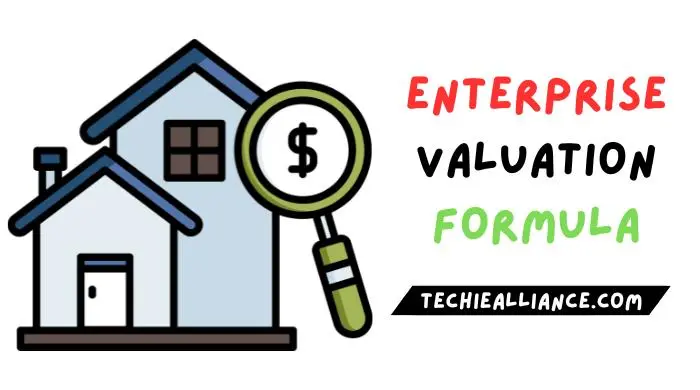Often used as a more complete substitute for market capitalization, enterprise value (EV) gauges the whole value of a firm. On the balance sheet of a firm, EV comprises not only its market capitalization but also short-term and long-term debt as well as any cash or cash equivalents.
Components of Enterprise Value (EV)
Enterprise value uses figures from a company’s financial statements and current market prices. The components that make up EV are:1
- Market capitalization: The combined worth of a company's outstanding preferred and common shares.
- Debt: Long-term plus short-term debt combined.
- Unfunded pension obligations, should any exist: In an underfunded plan, the amount of capital lacking to meet pension benefits or the amount a firm has to set aside. In case this value exists, it might be included to the market cap.
- Minority interest: A subsidiary's equity worth if less than half of its ownership. It can be included into EV computation's market cap.
- The whole sum of cash, certificates of deposit (CDs), drafts, money orders, commercial paper, marketable securities, money market funds, short-term government bonds, Treasury bills a corporation has.
Read also: Public Service Enterprise Group's stock is expected
Enterprise Value Formula and Calculation
term debt=Cash and cash equivalents; the liquid assets ofa company, but may not include marketable securitiesEV=MC+Total Debt−Cwhere:MC=Market capitalization; equal to the current stockprice multiplied by the number of outstanding stock sharesTotal debt=Equal to the sum of short-term andlong-term debtC=Cash and cash equivalents; the liquid assets ofa company, but may not include marketable securities
If not easily available online, you would multiply the number of outstanding shares by the current stock price to find market capitalization. Then, on the balance sheet of the corporation, sum all of its debt—long-term and short-term alike. Add the market capitalization to the total debt at last, then deduct any cash and cash equivalents from the outcome.
What Does EV Tell You?
In many respects, enterprise value (EV) is not like basic market capitalization; many believe it to be a more realistic portrayal of a company's worth. EV indicates interested parties or investors the worth of one firm and the amount another company would need should it choose to buy that one.
One such factor is that a company's EV may be negative if the value of its cash and cash equivalents taken overall exceeds the value of its debt and market capitalization combined. This indicates that a corporation is not making good use of its resources; too much cash is sitting about not being employed. Many things may be done with extra money, including dividends, buybacks, growth, research and development, maintenance, staff pay increases, bonuses, debt pay-off.
EV As a Valuation Multiple
Many financial ratios assessing a company's success use on enterprise value as their foundation. For instance, the company has entrepreneurial value. It ties the whole worth of a firm from all sources to a gauge of operating earnings produced—that is, earnings before interest, taxes, depreciation, and amortization (EBITDA).
In other cases, EBITDA—which gauges a company's capacity for income—alternatively replaces basic profits or net income. But since EBITDA eliminates the cost of capital assets like real estate, plants, and machinery, it might be deceptive. Another statistic, EBIT, can be used as a similar financial indicator without the disadvantage of eliminating depreciation and amortization charges linked to property, plant, and equipment (PP&E).
Read also: Zero Capital Gains Rate: Definition, Operation, and Example
EV/EBITDA
Less its non-cash costs, the enterprise multiple (EV/EBITDA) statistic is used as a valuation tool to compare the value of a firm and its debt to its cash earnings. For analysts and investors wishing to compare businesses within the same sector, it is therefore perfect.
EV/EBITDA finds use in several contexts.
- Comparing companies with varying degrees of financial leverage (DFLs), the ratio could be more helpful than the P/E ratio.
- EBITDA helps to value capital-intensive companies with high degrees of amortization and depreciation.
- Usually, EBITDA is positive even in cases where EPS is negative.
Enterprise Value vs. Market Cap
Why does market capitalization not fairly depict the worth of a company? It ignores a number of important elements, like the debt and cash reserves of a corporation.
Since it combines debt and cash to estimate a company's value, enterprise value is a variation on market cap.
For instance: Suppose Company A and Company B, two identical widget producers, have the same stock price—$4.32 per share. With a $4.32 million market worth, each boasts one million outstanding shares.
Enterprise Value vs. P/E Ratio
The price-to-earnings ratio, often known as the P/E ratio, is the ratio used to evaluate a company's present share price with respect to its earnings per share (EPS).Sometimes the price-to---earnings ratio is referred to as the price multiple or the earnings multiple. The P/E ratio ignores the debt a firm shows on its balance sheet.

